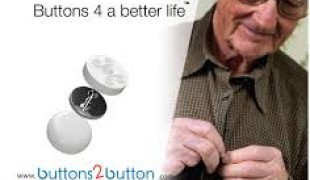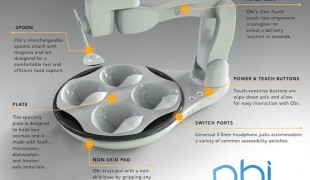- 8011
- 435
- 11
- 14
- 0
- Help Ukraine
About the solution
People with dwarfism are characterized by short stature and they face numerous difficult situations in everyday life, namely when it comes to accessibility.
To overcome the difficulty of access to the buttons on most elevators, vending machines, car parks, among others, I created an "extended cable" (from the central pole of an umbrella).
This solution shall not include mention to the use of drugs, chemicals or biologicals (including food); invasive devices; offensive, commercial or inherently dangerous content. This solution was not medically validated. Proceed with caution! If you have any doubts, please consult with a health professional.
-
-
432
-
7
-
7249

Woman creates magnetic buttons to help stepfather who has Parkinson's disease get dressed
(SELF)-CARE: DRESSING: Dressing independently.
Grip
CAREGIVING
Parkinson's Disease
Multiple Sclerosis
Bone Disorders (Decalcification, Bone Deformity, Bone Fracture, Bone Infection)
diabetes type 2
Assistive Daily Life Device (to help ADL)
Body-Worn solutions (Clothing, accessories, shoes, sensors...)
Muscle weakness
Tremors
Difficulty coordinating movements
Stiffness or rigidity (difficulty moving)
Limited range of motion
Muscle pain or stiffness
Loss of balance
Reduced grip force (grip)
Trouble with fine motor skills (e.g., writing, buttoning clothes)
Loss of muscle coordination
Muscle cramps or spasms
Joint deformity
Muscle twitching
Numbness or tingling in the extremities
Joint pain or swelling
Promoting self-management
Managing Neurological Disorders
Promoting inclusivity and social integration
Caregiving Support
Endocrinology
Neurology
Orthopedics
Rheumatology
United States
-
-
-
462
-
0
-
6966

Watch to remind patients to take their meds
CAREGIVING
hyperthyroidism
Assistive Daily Life Device (to help ADL)
Body-Worn solutions (Clothing, accessories, shoes, sensors...)
Promoting self-management
Manage Medication
Preserving Organ Function
To improve Treatment/Therapy
Preventing (Vaccination, Protection, Falls, Research/Mapping)
Endocrinology
Immuno-allergology
Australia
-
-
-
672
-
0
-
9948

Man creates device to help grandfather feed himself
Grip
(SELF)-CARE: EATING: Eating independently.
Arthritis
Cerebral Palsy
Neuromuscular Disorders
Muscular Dystrophy
Assistive Daily Life Device (to help ADL)
Difficulty walking or moving
Muscle weakness
Muscle cramps or spasms
Difficulty coordinating movements
Stiffness or rigidity (difficulty moving)
Limited range of motion
Muscle pain or stiffness
Reduced grip force (grip)
Loss of muscle coordination
Joint deformity
Joint redness or warmth
Joint pain or swelling
Restoring mobility
Promoting self-management
Managing Neurological Disorders
Medical Genetics
Neurology
Orthopedics
Rheumatology
United States
-
 en
en